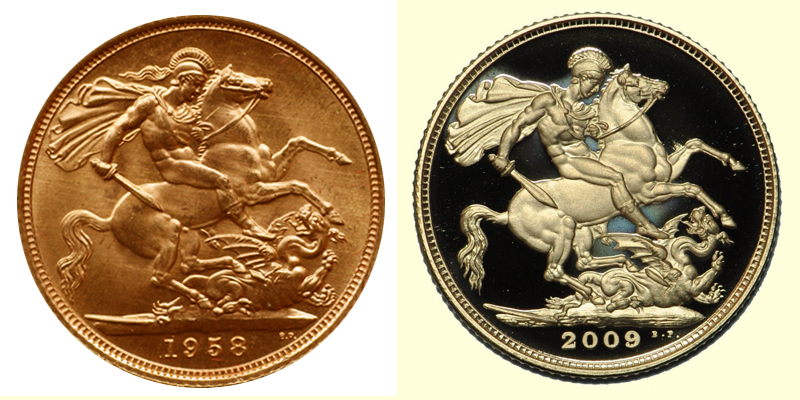Uncirculated coins and Proof coins, What is the difference between an Uncirculated and a Proof coin? How can you tell the difference between an Uncirculated and Proof coin?

Uncirculated – Is actually a grade and refers to the top grade for a coin which has been struck for general circulation, usually struck in larger numbers, sometimes called a business strike.
Proof – Is a coin struck using specially prepared coin dies which are either polished, sandblasted or both. Proof coins are struck mainly for collectors, usually in smaller numbers and aren’t intended for circulation. If the die is polished before the coin is struck the coin will appear very reflective and even dark at certain angles. If the coin has been sandblasted this will leave a matte appearance. Often some modern proof coin dies are sandblasted first and then the high points on the die are polished, leaving mate looking high points like the queens bust or St George and the horse whereas the field (blank area) will be reflective.
Proofs also usually tend to have sharper edges and the legends and detail tend to be slightly sharper.
Once a proof coin becomes quite worn, it can be hard to distinguish from a normal worn circulated coin.
